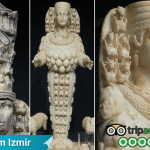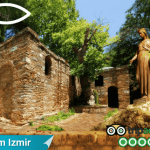Where is the House of the Virgin Mary Located?
The House of the Virgin Mary is located on the top of Mount Koressos (Bulbul Mountain in Turkish) near Ephesus (3 km. away). It is one of the most visited pilgrimage sites among the attractions surrounding Ephesus Ancient City. Mary’s House is also located approximately 15 kilometers from Kusadasi, a popular port of call for cruise ships.
Table of Contents
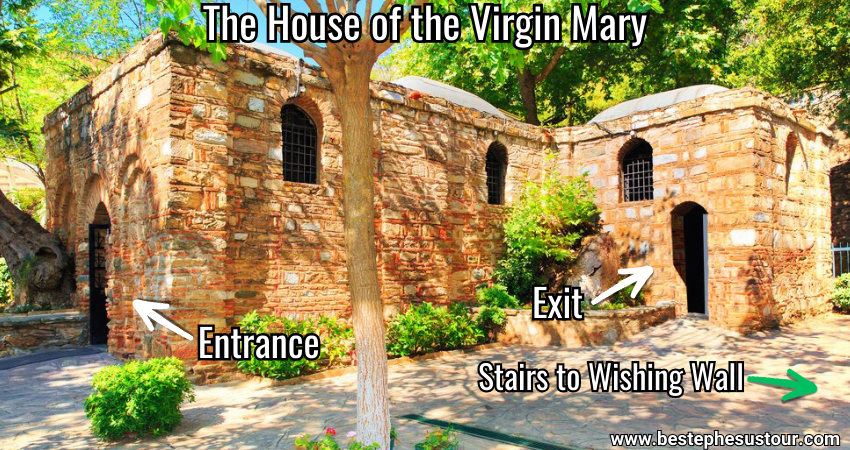
A Sacred Site on Mount Koressos
According to Christian tradition, it was the final home for the Virgin Mary, mother of Jesus. This sacred place holds great significance for Christians and has attracted thousands of visitors since its discovery. Although the Bible provides limited information about Mary’s later life, Orthodox and Catholic traditions believe that St. John the Apostle brought Mary to Ephesus following the crucifixion of Jesus, where she lived for the rest of her life.
Origins of the Tradition and Discovery of Mary’s House
This belief is inspired by the visions of Blessed Anne Catherine Emmerich (1774–1824), a German nun. The discovery of the House of the Virgin Mary in 1891 is an interesting story of combinations of archaeological searches, historical evidence, and religious visions of Anne Catherine Emmerich. The German lady was born in Flamschen (1774) and died in Dulmen, Germany, at the age of 49 (1824).
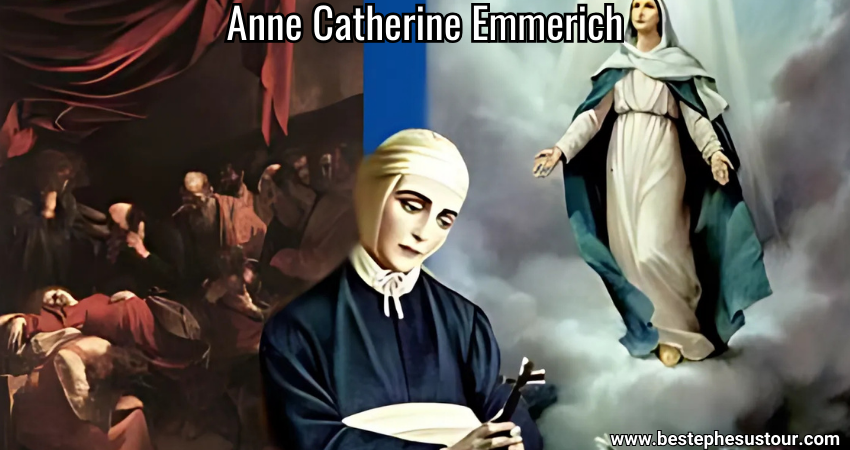
Due to her prophecies about the lives of Jesus Christ and the Virgin Mary, she became one of the most popular religious figures of her time. Anna Catherine Emmerich claimed to have spoken with Jesus in her dreams as a child. A German poet and author named Clemens Brentano compiled her prophecies and predictions into books.
Clemens Brentano became Emmerich’s supporter in 1819, believing they met to help her fulfill God’s command by expressing the revelations in writing. For five years, from 1819 until Emmerich died in 1824, he wrote many notes with accounts of her prophecies involving scenes from the New Testament.
Brentano’s notes helped to determine the exact location of the House of the Virgin Mary, 57 years after Anne Catherine Emmerich’s death.
First Exploration Attempts
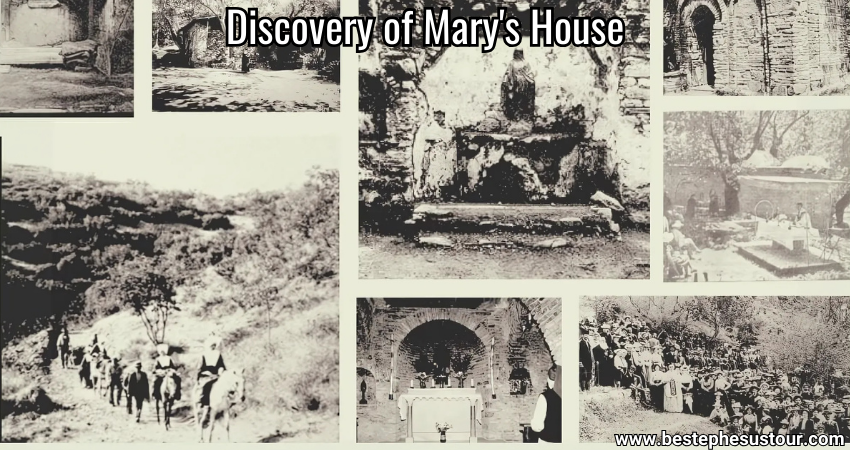
In 1881, Abbé Julien Gouyet decided to follow the descriptions from the visions of Blessed Anne Catherine Emmerich. His search was further supported by the writings of Gregory of Tours (538–594), an early church historian, who also mentioned a chapel on top of the Mount Koressos.
“On the top of a mountain close to Ephesus, there are four walls without a roof, John sat inside these walls.”
Bishop Gouyet reported that he had found the House in 1881 in his letters to the Diocese of Rome and Paris. But his letters were largely ignored, and the discovery did not succeed.
Rediscovery and Recognition
A decade later, in 1891, Marie de Mandat Grancey, a nun at the Izmir French hospital, decided to follow the descriptions of Anne Catherine Emmerich’s visions and set up a discovery trip to Ephesus with Lazarist priests from Izmir. They finally found the ruins of a house that closely resembled Catherine Emerich’s description.
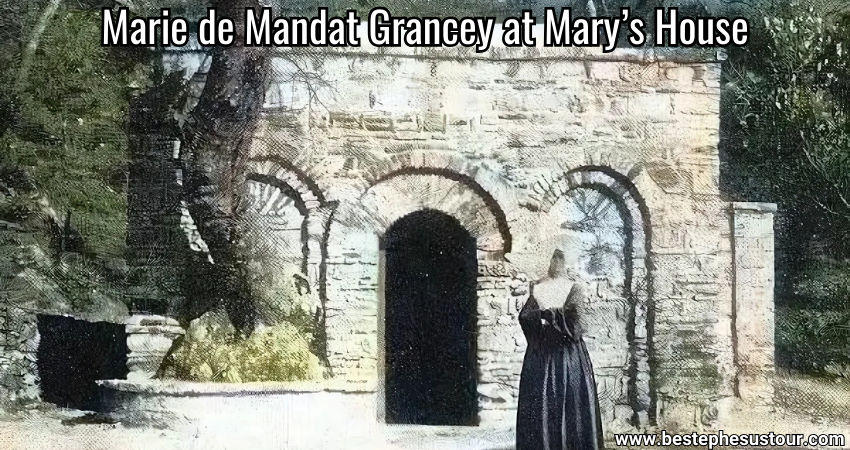
Recognition of the Church
The first visit to the house was in 1896, which was four years after Marie de Mandat Grancey purchased the ownership of the house location. Additional studies suggest that the structure dates back to the early Christian period, which is believed to be the time the Virgin Mary brought Ephesus by St. John the Apostle. While there is no definitive historical evidence, this house is now considered one of the most significant sites believed to be where the Virgin Mary lived.
Official Recognition and Papal Visits
In 1896, the first official pilgrimages began, and over time, the site gained recognition. Pope Pius XII declared it a place of pilgrimage in 1951, and Pope John XXIII confirmed its sacred status in 1961. Following these declarations, the spiritual significance of the site was strengthened by visits of several popes.
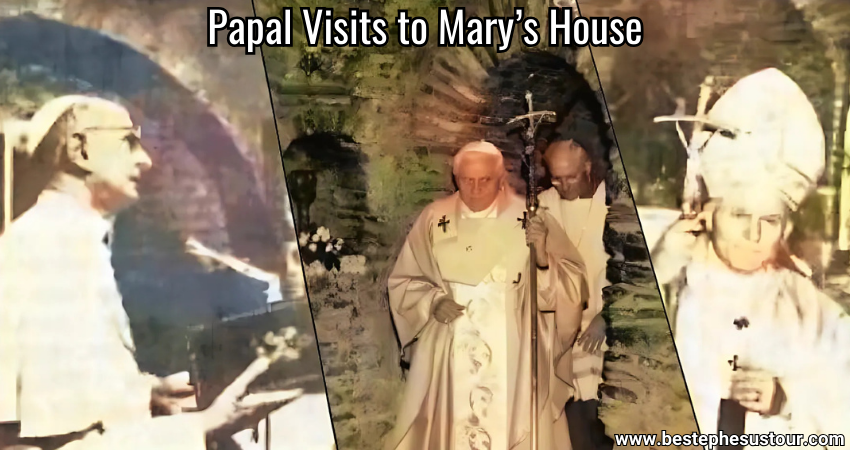
Over time, the House of the Virgin Mary gained worldwide recognition:
- 1951 – Pope Pius XII declared the site a place of pilgrimage.
- 1961 – Pope John XXIII reaffirmed its spiritual importance.
- 1967 – Pope Paul VI became the first Pope to visit the site.
- 1979 – Pope John Paul II emphasized its religious significance.
- 2006 – Pope Benedict XVI visited and celebrated Mass at the site.
Virgin Mary in Islam
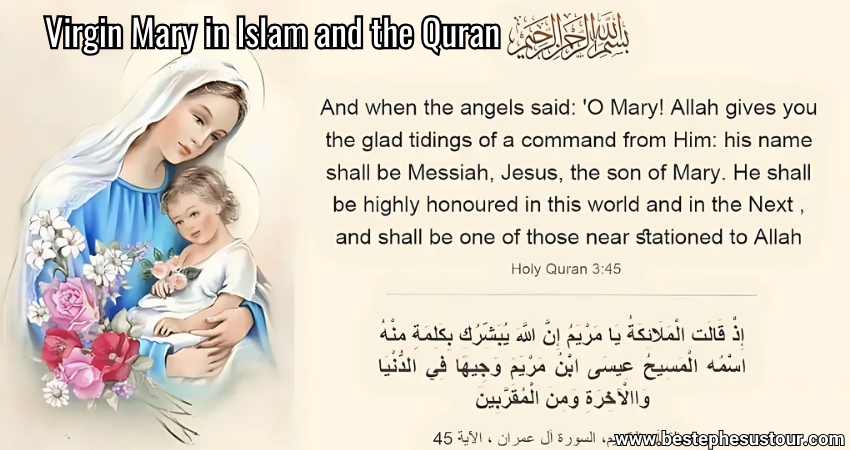
Mary is also highly respected in Islam and known as Maryam in Arabic (Meryem Ana in Turkish). The Qur’an, the holy book of Islam, accepts Jesus (Isa in Arabic and Turkish) as a prophet before Muhammed and mentions Mary as the mother of the Prophet. The Quran tells the story of her miraculous conception, highlights her purity, and recognizes her as a woman uniquely chosen above all others.
Where is the Tomb of the Virgin Mary?
The exact location of the Virgin Mary’s burial place is uncertain. Some historians, based on the Gospel of St. John, believe that she spent her last years in or around Ephesus, Turkey. However, there is no solid archeological and historical evidence to confirm this.
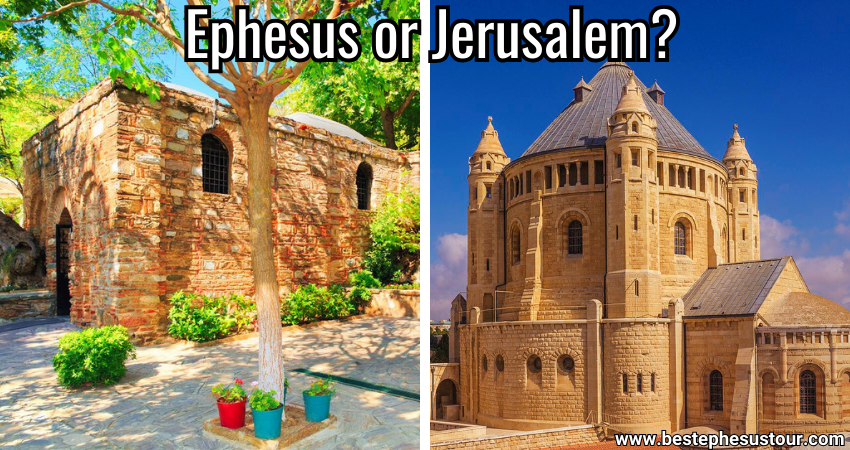
Today, the House of the Virgin Mary at Ephesus is considered a possible site. Additionally, Mount Zion’s Dormition Church in Jerusalem is another significant pilgrimage site that is believed to be her burial place. Since the Roman Catholic Church has not officially confirmed either location, the question of where the Virgin Mary is truly buried varies depending on different religious interpretations.
What Attracts Tourists to the House of the Virgin Mary?
Many visitors are interested in the House of the Virgin Mary for spiritual, religious, and touristic purposes. Holy water springs and the wishing wall are also some of the tourist attractions that draw attention to the House of the Virgin Mary.
Cistern: So-Called Baptism Pool
As you walk toward the church, after passing some small souvenir shops, you’ll come across a keyhole-shaped pool located in the center of the garden. Archaeological evidence suggests that the pool was part of Ephesus’s water distribution system. But the keyhole shape has led to the belief that it may have been used as a baptismal pool. The keyhole shape was a commonly used symbol in early Byzantine churches. The semicircular arch above doorways was often designed to resemble a keyhole, symbolizing that the entrance to sacred spaces—and thus the key to heaven—was through the church.
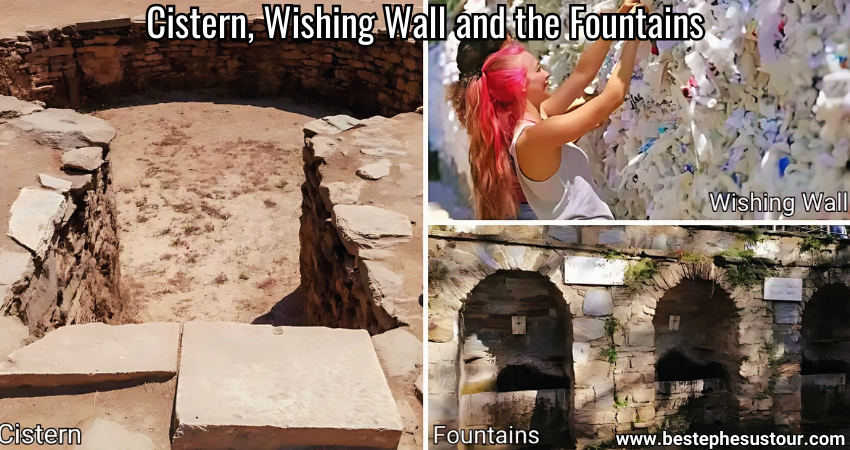
Water Springs: So-Called Holy Fountains
After the House of the Virgin Mary, as you walk down the stairs, you will come across “four fountains”. These fountains hold different meanings for tourists. One represents health, another wealth, another love, and the last one symbolizes money. Tourists visiting this sacred place often drink from these fountains or fill their bottles to take the water with them as a souvenir.
Wishing Wall
There is a “Wishing Wall” below the House of the Virgin Mary, passing little after the holy fountains. This wall attracts the attention of many local and foreign tourists. Visitors tie their wishes written on pieces of paper, napkins, or fabric. Especially local tourists believe that heartfelt prayers and wishes will be fulfilled through the intercession of the Virgin Mary.”
Evidence Supporting the House of the Virgin Mary in Ephesus
After Jesus was crucified, Jerusalem was not as secure for followers and apostles as before. While some apostles, such as James, remained in Jerusalem, some others continued missionary work in other regions, particularly in the Roman provinces. Mark is believed to have gone south, Thomas traveled east, and some followers spread around the Mediterranean. According to a common belief, the Virgin Mary and Apostle John travelled to Ephesus. Several pieces of evidence supporting this claim are as follows:
The Council of Ephesus in 431 and the Ecumenical Letter
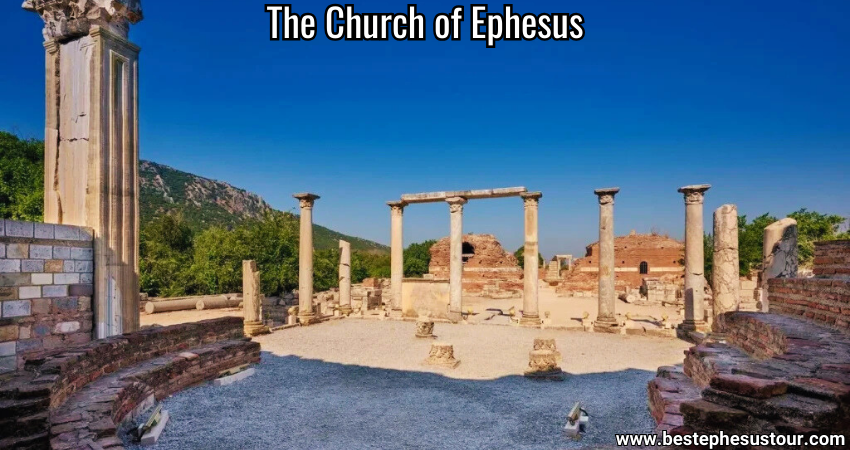
The earliest written document suggesting the Virgin Mary spent her final years in Ephesus is the Ecumenical Letter of the Council of Ephesus in 431. In this letter, the city of Ephesus is referred to as the place where the Theologian John and the Virgin Mary, Mother of God, lived and were buried.
Writings of Bar-Hebraeus
The 13th-century church writer and bishop Bar-Hebraeus claimed that Saint John traveled to Patmos with Mary and later founded the Church of Ephesus. However, he did not clearly state where Mary was buried. Based on this claim, there is controversy about whether Mary spent her final days in Ephesus or on the island of Patmos.
The Claim of Pope Benedict XIV
In the 17th century, Pope Benedict XIV claimed that the Virgin Mary went to Ephesus with Saint John. He even planned to prohibit the reading of books that stated Mary had died in Jerusalem. Unfortunately, he passed away before he could carry out this intention.
Celebration of the Assumption of the Virgin Mary
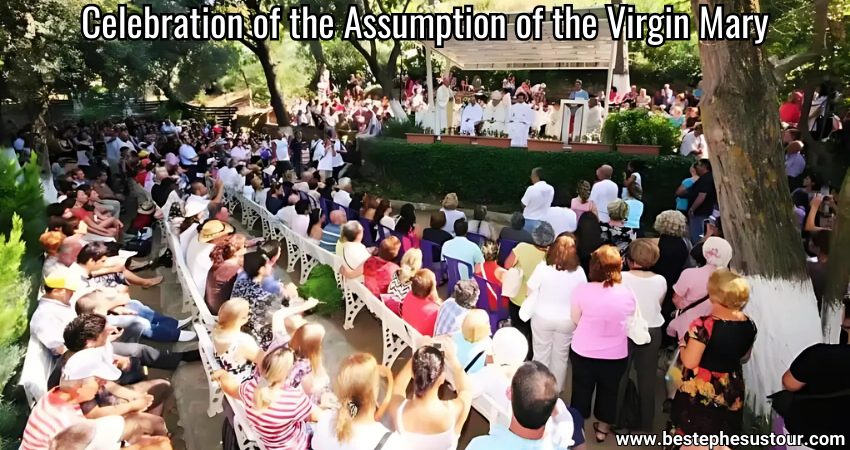
Each year on August 15th, the Assumption of the Virgin Mary is commemorated with a special ceremony at the House of the Virgin Mary. This holy day signifies the belief in the Virgin Mary’s bodily assumption into heaven. The modest stone church on Mount Koressos (also known as Bulbul Mountain) becomes a gathering place for pilgrims from all around the world. A Mass and ceremonial procession are held to honor her memory.
The House of the Virgin Mary Video
How to Get to the House of the Virgin Mary?
The House of the Virgin Mary is easily accessible year-round. It is located approximately 50 miles (80 km) from Izmir, 10 miles (16 km) from Kusadasi, and just 5 miles (8 km) from Selcuk-Ephesus. Transportation options are plentiful, including buses, shared taxis known as dolmuş, and regular taxis operating throughout the day. Additionally, a train service called Izban from Izmir to Selcuk-Ephesus is available, from where visitors can continue their journey by taxi to reach the House of the Virgin Mary.
If you’re in Selcuk (the closest town to Ephesus):
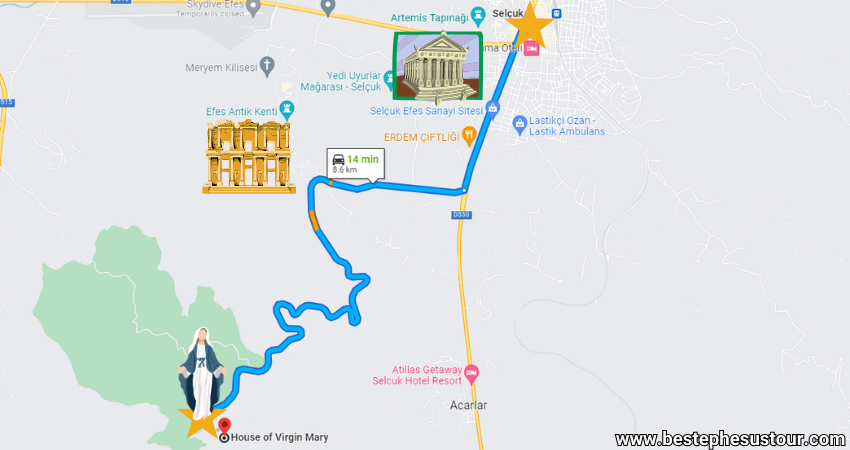
- By Taxi:
- The easiest and fastest way. It’s about 8 km from Selcuk and takes 15-20 minutes. Taxis are available near the Selcuk Bus Station.
- By Rental Car:
- Follow signs to Ephesus and then to “Meryem Ana Evi.” The road is paved and scenic as you go up the mountain.
- By Tour:
- Many local travel agencies offer tours that include the House of the Virgin Mary, the Ancient City of Ephesus, and nearby attractions. https://www.bestephesustour.com/ephesus-tours-from-kusadasi
If you’re in Kusadasi:
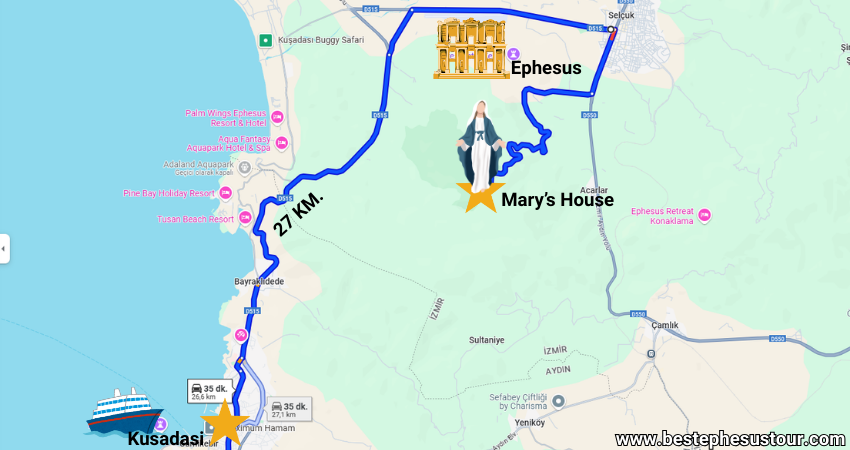
- By Taxi
- It’s about 25 km from Selcuk and takes 35 minutes. The most expensive option and costs depend on bargaining. Best to pre-arrange your return or ask the driver to wait (with extra cost).
- By Tour
- Many tour companies in Kusadasi offer tours, including the House of the Virgin Mary. Ideal if you’re visiting from a cruise ship or staying in a hotel. Please find the Ephesus tours from Kusadasi and Cruise Port at the link: https://www.bestephesustour.com/ephesus-tours-from-kusadasi
- By Bus + Taxi
- Take a minibus (dolmuş) from Kusadasi to Selcuk (30 mins). Then, take a taxi from the Selcuk Bus Station.
- By Rental Car
- Drive from Kusadasi via Selcuk. Follow signs to Ephesus, then Meryem Ana Evi. The route is well-marked and very manageable.
If You’re in Izmir:
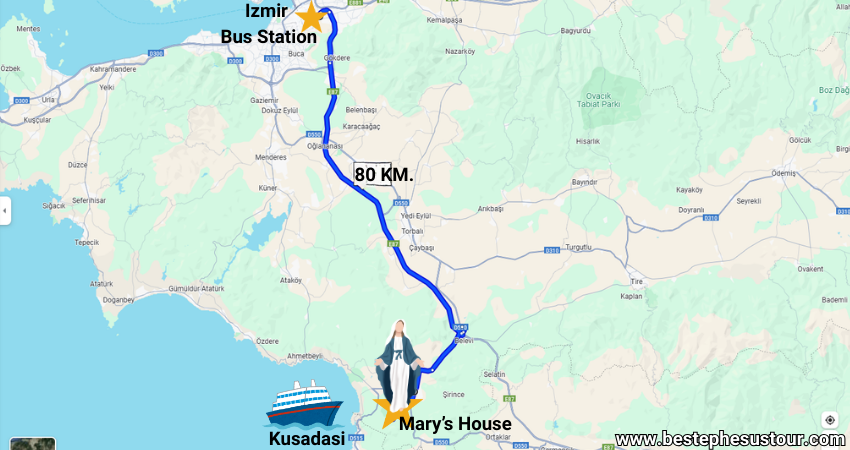
- Take a train or bus to Selcuk (about 1 hour).
- Train: From Izban Basmane Station to Selcuk (Izban).
- Bus: From Izmir Bus Station to Selcuk (frequent buses).
- Then, follow the steps from Selcuk above.
- By Tour
- Many tour companies offer tours, including the House of the Virgin Mary. Ideal if you’re visiting from a cruise ship or a plane or staying in a hotel in Izmir. Please find the Ephesus tours from Izmir, Cruise Port, or Airport at the link: https://www.bestephesustour.com/ephesus-tours-from-izmir
House of the Virgin Mary Entrance Fee and Opening Hours
The House of the Virgin Mary is open every day between 08:00 and 18:00. Please note that 18:00 is the closing time, not the last entrance time. Mary’s House’s Admission (Entrance fee) is 500 Lira, approx. 14 Euros per person in 2025. Both Visa and Mastercard are acceptable forms of payment.
House of the Virgin Mary Dress Code
While there is no official dress code, it is important to be culturally sensitive when visiting sacred sites, such as the House of the Virgin Mary. We recommend dressing modestly by covering your shoulders and knees to show respect at these historical Christian landmarks. This thoughtful approach helps maintain the sanctity of these destinations and ensures a respectful experience for all visitors.




